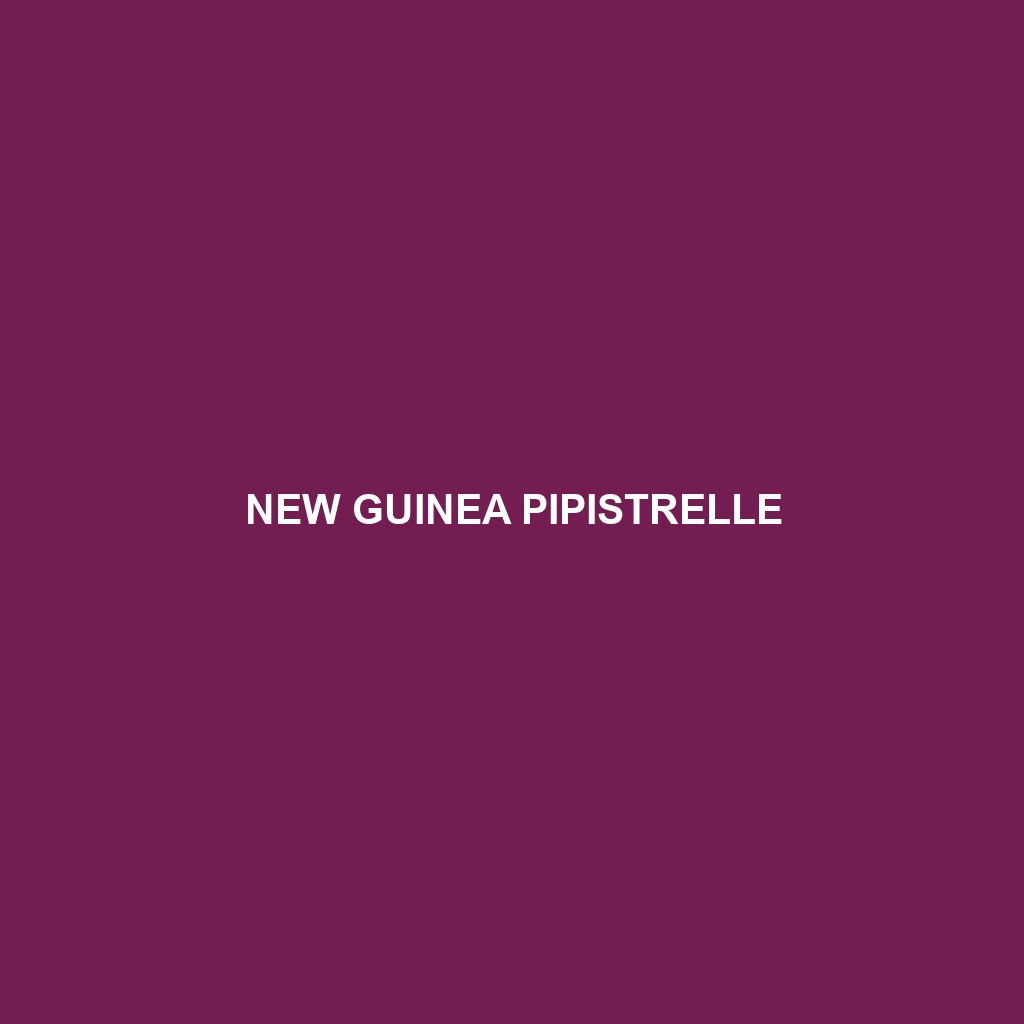New Guinea Pipistrelle
Common Name: New Guinea Pipistrelle
Scientific Name:
Habitat
The New Guinea Pipistrelle is primarily found in the lush, tropical rainforests of New Guinea, specifically in both coastal and mountainous regions. It thrives in environments that feature a diverse array of flora, providing ample roosting sites in tree hollows and foliage. This species is also observed in open areas near forests, where it can forage for insects in the twilight hours.
Physical Characteristics
The New Guinea Pipistrelle is a small bat, typically measuring between 3 to 7 centimeters in body length with a wingspan of approximately 25 to 30 centimeters. Its fur is dense and soft, exhibiting a rich brown or gray color, often with lighter underparts. Distinctive features include elongated ears and a slender snout, which assist in echolocation, crucial for hunting in dense forest environments.
Behavior
This species is primarily nocturnal, emerging at dusk to forage for food. New Guinea Pipistrelles are known for their agile flight patterns, allowing them to navigate through dense vegetation with ease. These bats are social creatures, typically found in small groups, and display a range of vocalizations for communication, particularly during mating rituals.
Diet
New Guinea Pipistrelles are insectivorous, primarily feeding on a variety of flying insects such as moths, beetles, and flies. Their foraging habits involve using echolocation to detect prey, allowing them to hunt effectively even in low-light conditions. The ability to consume large quantities of insects plays a vital role in controlling pest populations in their habitat.
Reproduction
Breeding occurs typically during the wet season, with females giving birth to one or two pups per reproductive cycle. The gestation period lasts approximately 40 to 50 days, after which the young are nursed and cared for in roosting sites. The young bats gain independence relatively quickly and can fly within a few weeks of birth, demonstrating a high survival rate in their tropical habitats.
Conservation Status
The New Guinea Pipistrelle is currently listed as ‘Vulnerable’ due to habitat loss from logging and agricultural development. Conservation efforts are underway to preserve its rainforest habitat and ensure the survival of this unique bat species.
Interesting Facts
One fascinating aspect of the New Guinea Pipistrelle is its unique echolocation calls, which differ from those of many other bat species. These calls allow them to hunt with incredible precision in complex habitats, underscoring their adaptation to life in dense forest environments.
Role in Ecosystem
As an insectivore, the New Guinea Pipistrelle plays a crucial role in maintaining ecological balance by controlling insect populations. Their presence is a sign of a healthy ecosystem, and their interactions with other species contribute to the overall biodiversity of New Guinea’s unique environments.
